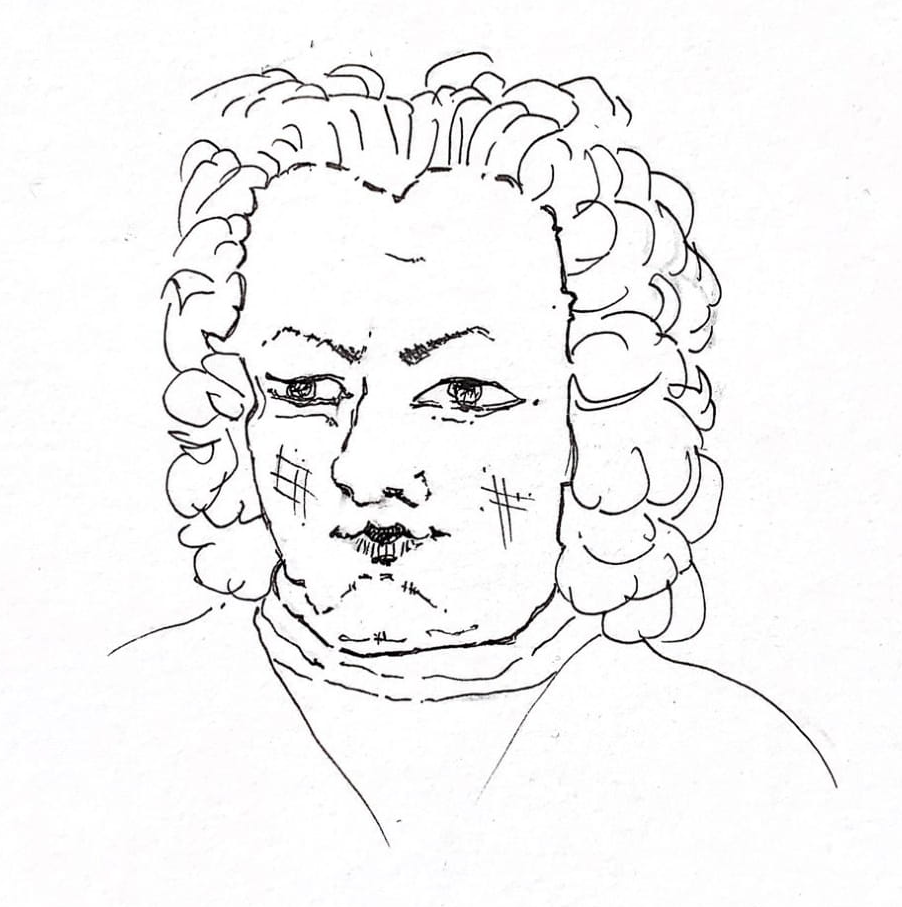A cantata, with a past, as Bach has drawn on previously performed material.
Most probably, a celebration cantata, with a single oboe d’amore orchestra, with a heavy continuo, using a violone in its support and supplemented, by flute and a familiar trio, 2 x corno + timpani. These raise the status to festive.
There are no recitative and no closing choral, as such.
However, the choral melody does find and thread its way, -subtly and surreptitiously, into the weave of the musical ideas and executions.
The text, is one, of a feel-good nature, that accepts faith, in the light and reality of blessing and adversity.
1/(chorus) vicace:
‘What God does, is well done. His will is just and lasts forever. However He acts on my behalf, I shall stand, calmly, by Him. He is my God, who sustains me, when I am in destress. That is why I let Him prevail.’
On top of an obvious ‘festive-feel’ there is also, a notably pastorale one, as well, characterized, by, particularly the flute, for instance, 16, through 24, as if the hint at calmness, the ‘stille’ of the 4th line of text, is somehow pastorale. The horn color also reinforces this.
The lines of the choral melody are presented simply and beautifully, without fuss or fantasy and the whole seems mellow, in its resigned faith.
Note the rising 4th at the first entry of the choral melody, sopranos, bar 20.
2/ Duetto:
‘What God does, is well done. He will not deceive me. He leads me on the good and proper path, so that I am content to enjoy His favour and show my patience. He has the power to avert my misfortune, because He has the power, to do so.’
Accompanied only by continuo, the passacaglia-like continuo introduction, sets the structural scene of imitative and canon-like texture.
Notice the rise, of the fourth.
The musical impact, is again pastorale and ‘flat’, where emotion, is subservient, to faith, as the textural hi-lights, are explored, in almost every imaginative way, possible.
3/ (Aria)
‘What God does, is well done. He will not forget me and He who heals me and works wonders, will not feed me poison, in place of medicine. God is true and therefore, I shall build, on Him and trust, to His grace.’
A brisk Siciliana and with an elaborate and extended virtuoso flute part, is perhaps enough, to work, the wonders of the spirit, the breath of the flute matching, the breath of the spirit.
Notice again, the rise, of the fourth, at the beginning of the flute part and the veiled choral melody, minor style.
4/ (Aria)
‘What God does, is well done. He is my light, my life, who wishes me no evil. I shall devote myself to Him in joy and sorrow. The time will come, when I shall see, how true are all His intensions.’
The key to this movement, is the ‘…joy and sorrow…’ of the 4th/5th line and the dance-like syncopation, with the semiquaver- skip, gives this away.
These component rhythms, are passed around, back and forth, throughout and about, the musical structure, -sometimes specifically marked p or f and so doing, they emphasize, a devotion, that is all consuming, almost, to the point of an obsession.
Over this light weight and light headed bounce, there seems to be no heaviness at all.
5/ un poc’ allegro
‘What God does, is well done. Though I must drink of a cup, -that, according to my misconception, tastes bitter, I shall feel no terror, because, at the last, I shall find joy, -and with sweet comfort, in my heart. Then shall pain yield.
This ‘gone-wrong’ gigue, is really what it is, heavy and confused.
The text is giving us a message, of faith, but the music is heavy and even heavier, when the Violone is indicated in the score, -bar 11 and opening, or not, bar 9.
The counterpoint between the three of them, -oboe, alto and continuo, is skilfully constructed, but seems and sounds uneasy.
Might a bitter misconception, be at the root of this?
6/(chorus)
‘What God does, is well done. To this, I shall be constant, though I be cast, into the rough road, by affliction, death and misery. God shall hold me, just like a father, in His arms. That is why I let Him prevail.’
This is a real tutti and a splendid, ending, although a short one, to this rather splendid cantata.
The choral melody is set, straight and the ghost of its form, is heard, veiled, within, over and through the ritornellos.
The phrase lengths, as regards the chorale, are interesting enough, but coupled with what goes on, between each, long almost unending and interlocking phrases, makes for a difficult written analysis, for what is actually going on here.
Suffice-it-to-say, that, perhaps Bach is working blindly and unknowingly, or is it possible, that the idea of ‘…God shall hold me, like a father, in His arms…’ is what has motivated him, knowingly, or un knowingly?
